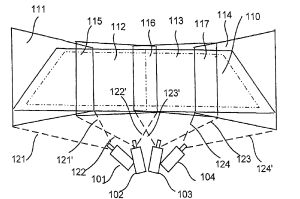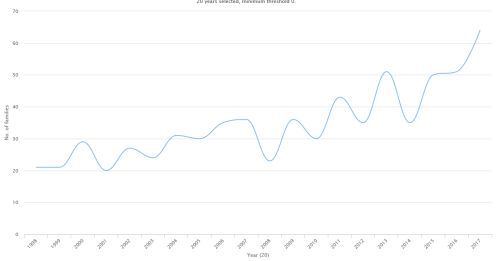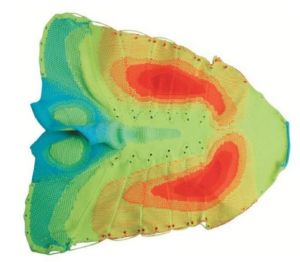With the FIFA World Cup set to kick off this week, we've taken a look at some of the new technology which will be used to help referees, coaches and players over the next few weeks.
Video assistant referees (VAR)
VAR technology will be used at a World Cup for the first time this year, with the technology set to be used to assist the on-pitch referee with goals, penalties, red cards, and cases of mistaken identity. VAR involves a referee who watches the match from a remote location with access to different camera angles, and can communicate with the on-pitch referee to review the referee's decisions. The provider of the VAR technology this year is Hawk-Eye Innovations, who are also well known in the tennis and cricket worlds where they have been used since 2007 at Wimbledon.
Patent application WO0141884, filed in 2000, relates to a video processing system for use in ball games, including video cameras, a ball tracker, and a video processor which can: identify the ball in a series of images; compute its 3D position; predict a flight path; and map the predicted flight path onto a play-area, such as a court or pitch. This type of system can also be used for goal line technology in football to determine whether a ball has crossed the goal line.

Alternative ways of detecting whether a goal has been scored include those described in EP2219744 and EP2136887. In EP2219744, a radio transmitter is arranged in the ball, with detectors arranged around the goalposts. In EP2136887, magnets are provided either side of a goal line and in-ball sensors are used to detect the magnetic fields from either side in order to determine whether the ball has crossed the goal line.
Electronic Performance and Tracking Systems (EPTS)
Wearable technology is becoming commonplace in many sports to enable athletes to get the most out of their training. The IFAB (International Football Association Board) has recently approved the use of such systems by players in a football match, along with handheld technologies which can be used to analyse the data from the bench. These systems use a variety of sensors to track player speeds and ball positions, and to measure load or physiological parameters, such as heart rate, and can be used by the coach to monitor and improve player and team performance.
One such system has been developed by US company ChyronHego. Patent US7864215, was granted in 2011 for a method and device for generating wide image sequences. The patent claims two overlapping video cameras and a processor configured to identify the overlap between the two camera images, compensate for relative rotation between the two cameras, and generate a wide image video based on synchronously recorded video sequences. This technology is now used in their popular TRACAB system which can optically track players and the ball across the entire football pitch.

Football boots
As the primary point of contact between the player and the ball, what a footballer wears on their feet is very important. In fact, football boots are such a large industry that 750 families of patent applications related to football boots were published worldwide between 1998 and 2017. As can be seen from the graph below, the number of applications has steadily increased over the past 20 years.

Worldwide applications related to football boots
Perhaps unsurprisingly, the top applicants are Nike (over 80 applications), Adidas (over 50 applications) and Puma (over 20 applications).
Of course, football boots and trainers must look good as well as perform on the pitch. In the past 15 years, Nike, Adidas and Puma combined have filed over 5,500 registered designs in the EU for "Footwear and socks". Many of these relate to the shape of parts of the footwear, such as the upper, the sole, or the studs, however there are also registrations which depict the bright colours which are popular on the pitch. One such registration is EU Design 003006287-0010 which depicts the colourful design used on the upper of Nike's Magista 2 boot. The eye-catching design replicates a heat map depicting the areas of the foot which are more sensitive to touch and more likely to come into contact with a ball.

So, while you're enjoying the tournament over the next few weeks, why not see if you can spot any of these innovations in use!
The content of this article is intended to provide a general guide to the subject matter. Specialist advice should be sought about your specific circumstances.

